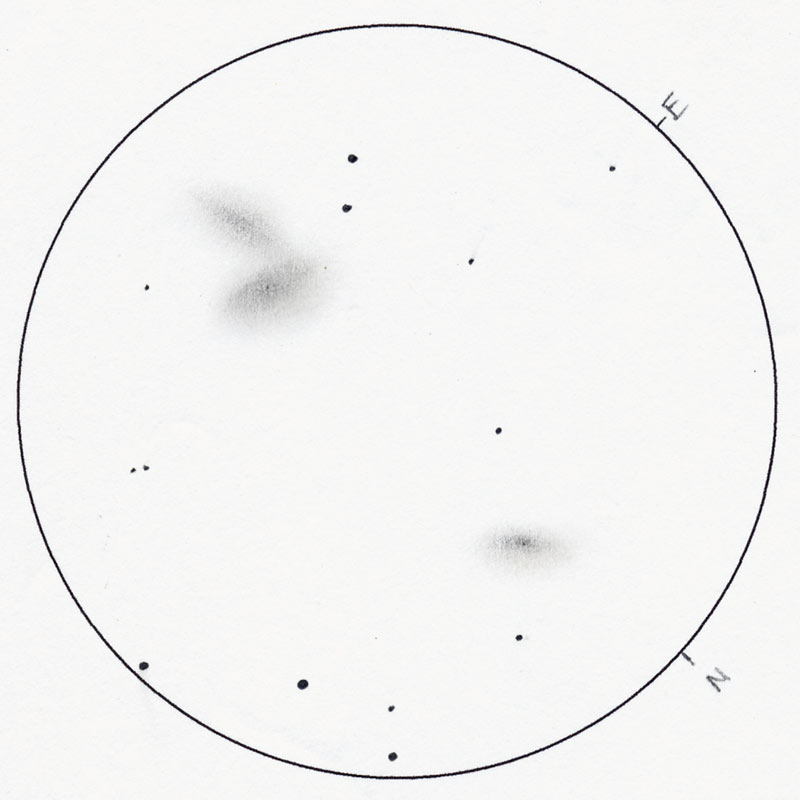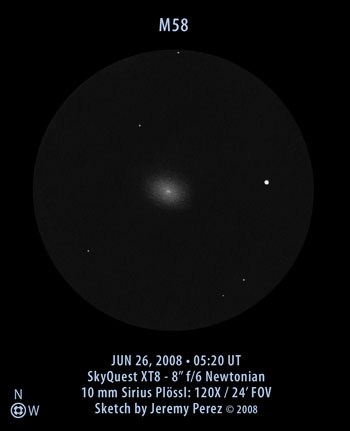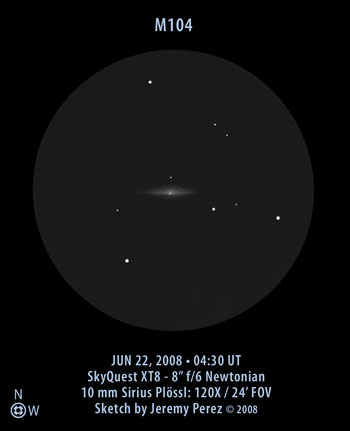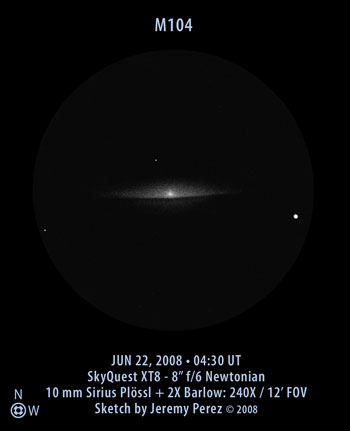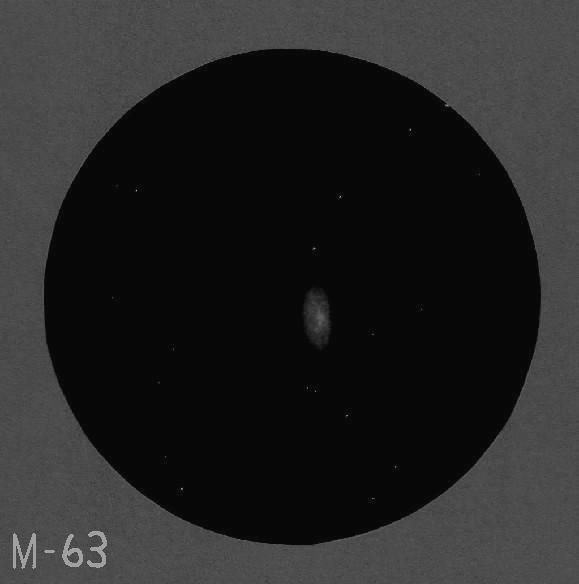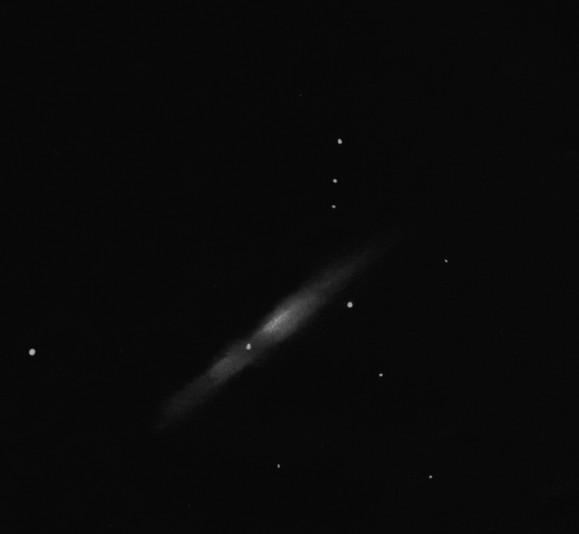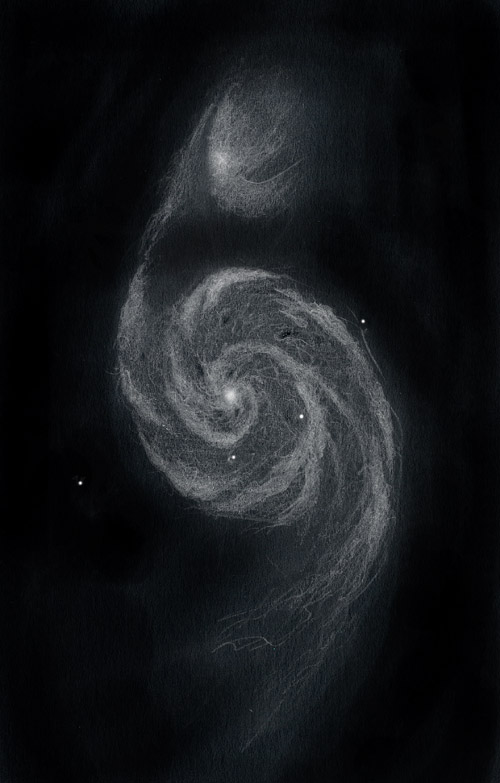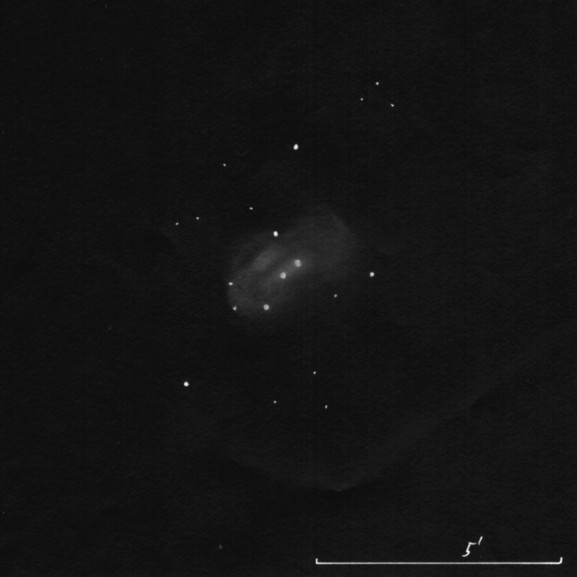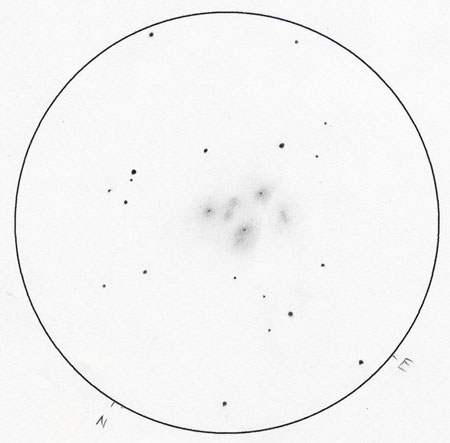The Siamese Twins (NGC 4567, 4568, and 4564)
Sketch and Details by Bill Ferris
NGC 4567 & NGC 4568 “Siamese Twins”: Galaxy Pair (Virgo)
RA: 12h 36.6m / DEC: +11º 15′.5
Instrument: 18-inch Obsession
This interacting galaxy pair resides in the heart of the Virgo cluster. My sketch presents a 199X view in the 18-inch Obsession. NGC 4567 and NGC 4568 stand just inside the southern field boundary. This duo is known collectively as the “Siamese Twins.” Of the two, NGC 4567 is more prominent. This 11.3 magnitude SA-type galaxy ranges over a 2′.8 by 1′ area and is aligned nearly east-to-west. This galaxy features a stellar core embedded within a brighter core region. NGC 4568 connects at the eastern tip and extends to the south-southwest. This 10.8 magnitude spiral is about the same length but cuts a slimmer profile. NGC 4568 also presents a brighter core region within the larger oval but does not present a stellaring at the center. A close pair of bright stars simmers 3′ to the east. About 11′ north just inside the opposite field boundary, NGC 4564 is seen. It’s an 11.1 magnitude elliptical galaxy about 1′.5 by 0′.6 in size. NGC 4564 is arranged along a northeast-to-southwest axis. It is flanked 4′ to the southeast and 3′ to the northwest by 12th magnitude stars. You’ll find the Siamese Twins about 38 southeast of M58.

